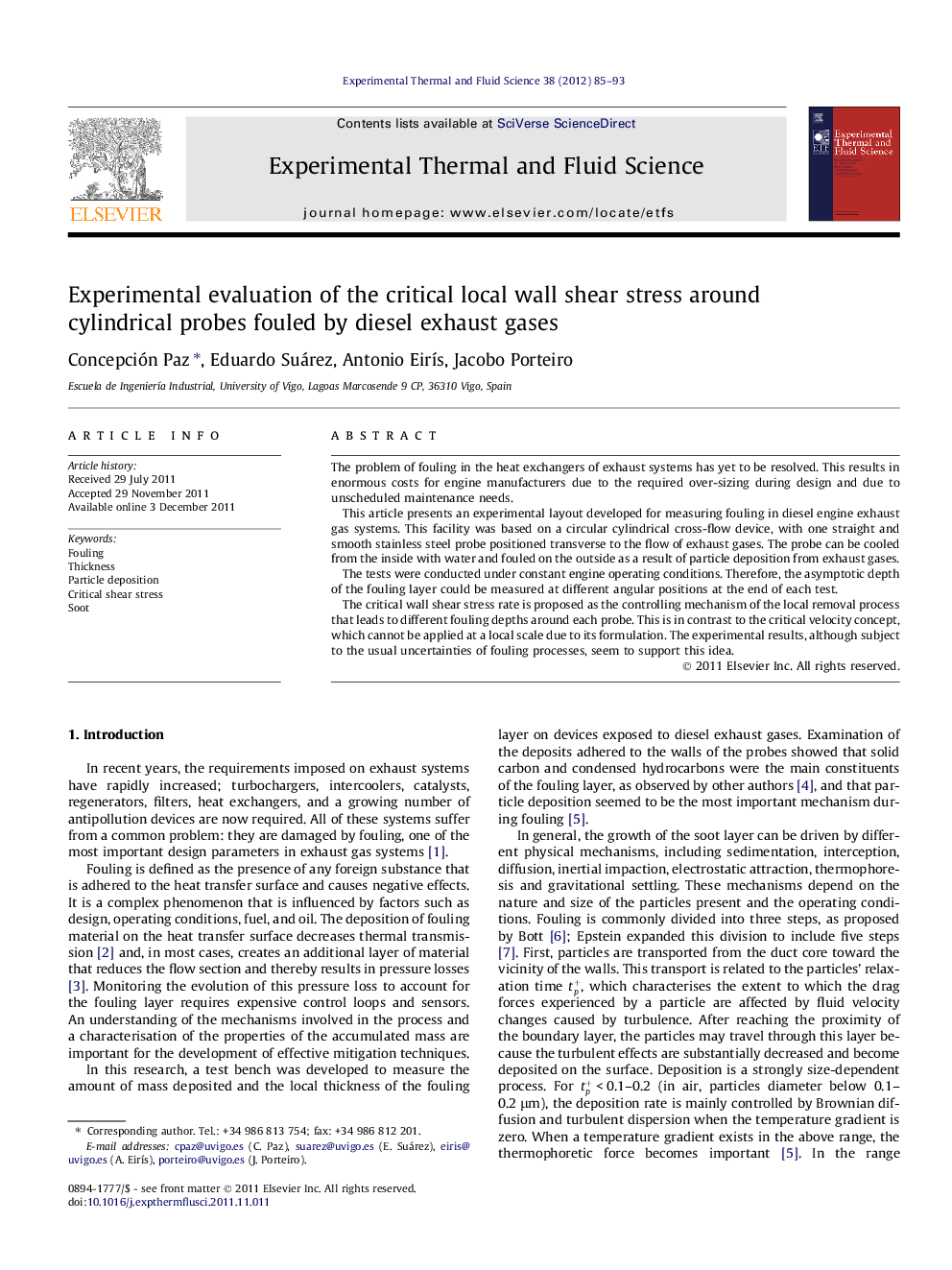| Article ID | Journal | Published Year | Pages | File Type |
|---|---|---|---|---|
| 651773 | Experimental Thermal and Fluid Science | 2012 | 9 Pages |
The problem of fouling in the heat exchangers of exhaust systems has yet to be resolved. This results in enormous costs for engine manufacturers due to the required over-sizing during design and due to unscheduled maintenance needs.This article presents an experimental layout developed for measuring fouling in diesel engine exhaust gas systems. This facility was based on a circular cylindrical cross-flow device, with one straight and smooth stainless steel probe positioned transverse to the flow of exhaust gases. The probe can be cooled from the inside with water and fouled on the outside as a result of particle deposition from exhaust gases.The tests were conducted under constant engine operating conditions. Therefore, the asymptotic depth of the fouling layer could be measured at different angular positions at the end of each test.The critical wall shear stress rate is proposed as the controlling mechanism of the local removal process that leads to different fouling depths around each probe. This is in contrast to the critical velocity concept, which cannot be applied at a local scale due to its formulation. The experimental results, although subject to the usual uncertainties of fouling processes, seem to support this idea.
Graphical abstractFigure optionsDownload full-size imageDownload as PowerPoint slideHighlights► Experimental apparatus to investigate fouling layer deposited by diesel exhaust gases. ► Cylindrical probes transverse to the flow of gas until asymptotic fouling. ► Measurements of the evolution of the fouling layer at angular positions. ► Critical wall shear stress concept was derived to quantify local erosion. ► Depth of the deposit can be related to the local shear stress.
